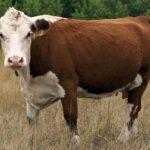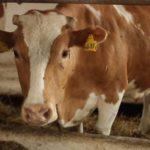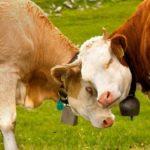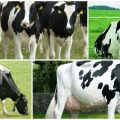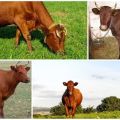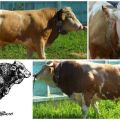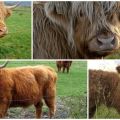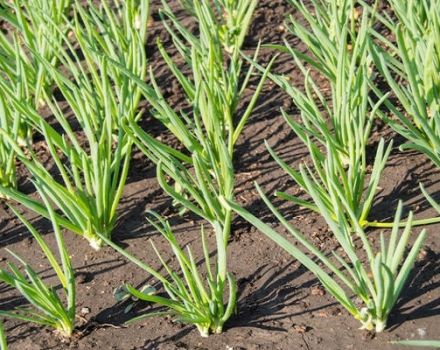Causes and symptoms of ketosis in cows, treatment regimens for cattle at home
Ketosis, which can affect cows, is a severe metabolic disease. It develops in dry cows due to insufficient energy balance of their body. It often proceeds covertly and is difficult to diagnose. Consider the causes and symptoms of ketosis in cows, the forms of the disease, how it can be determined and how to cure it, and what to do to prevent its development in cattle.
Description of the disease
The disease got its name from ketone bodies. These are the breakdown products of fatty acids and individual amino acids. If there are no violations, in the body of cattle they are oxidized without problems. But when metabolism is disturbed, their content in the tissues rises sharply, and they enter the bloodstream. This condition is called ketonemia. As a result of ketonemia, ketonuria and ketonolactia develop, that is, the ingress of ketone bodies into urine and milk.
Highly productive individuals 4-7 years old are ill in the final phase of pregnancy and within a month and a half after giving birth. Ketosis develops in animals in winter and spring, shortly after calving. At this time, their bodies are actively processing fat. For processing in the liver, glucose is required, but if there is not enough substance in the body, the processes for processing fat are disrupted, and ketosis develops.
Ketosis in cows leads to a sharp decrease in milk production, a reduction in the beneficial use of cows, weight loss, and impaired reproduction. In pregnant individuals, abortions can occur, dead calves are born, live ones are born weak and sickly.

Causes of ketosis in cows
As established by veterinary medicine, ketosis leads to not one, but several reasons at once. In dairy cows with high milk yield, it is feeding with feeds that are high in protein and low in carbohydrates. Such feed changes the bacterial composition of the rumen, which leads to inhibition of the breakdown of cellulose, which is the main source of energy for ruminants.
Feeding silage, sour beet pulp, rotten root vegetables, and high fat concentrates also leads to ketosis. A certain role in the development of ketosis and its consequences is played by disruption of the endocrine organs, namely, insufficient production of corticosteroids, thyroid and adrenocorticotropic hormones.The reason may be diseases of the proventriculus, genitals. Lack of exercise and active movement, when cows stay in stalls or in a close enclosure most of the time, also contributes to ketosis.
The main symptoms
The disease can develop in 3 forms - acute, subacute and chronic. The clinical manifestations of the disease depend on the level of metabolic disorders, the volume of ketone bodies concentrated in the blood, its alkaline reserve, and a decrease in glucose levels.
Acute form
Signs of acute ketosis: CNS disorders in the form of an increased reaction to adverse external stimuli. Animals can get scared, gnash their teeth, tremble, lick their lips, and moo. Drooling is noted. The stage of arousal is followed by a stage characterized by depression, apathy, and a weakening of response to stimuli.
In animals, digestion is disturbed, appetite is perverted, they refuse good food. At the stage of acetonemia in cows, intestinal motility is weakened, defecation is reduced. Exhaled air, urine and freshly milked milk smell like acetone. The skin of a sick individual becomes less elastic, the coat is tousled, icteric mucous membranes, light areas of the skin and the conjunctiva of the eyes. The liver is enlarged and painful on palpation.

Subacute ketosis
This stage in cows is accompanied by a change in taste preferences. Instead of hay, they may have a dirty bedding that contains feces and urine. Milk yield is reduced, milk flow may stop altogether. Pathological changes are expressed in organ dystrophy and loss of tone. Violations affect the heart, kidneys, liver, ovaries. They are enlarged, flabby.
Chronic form
In the chronic form, cows have low fatness due to decreased appetite and hypotension of the proventriculus, lethargy. Dystrophy of the liver, heart, disorders of the reproductive organs are noted. Blood, urine, and milked milk contain a large number of ketone bodies, the function of the thyroid gland and the reproductive organs are reduced.
How is the disease diagnosed
The diagnosis is made by laboratory tests. Research makes it possible to establish pathology in cattle before clinical symptoms appear.
For studies on ketosis, blood, milk and urine are taken. Ketone bodies should be found in them. The diagnosis of clinical ketosis can be made when the amount of beta-hydroxybutyric acid in 1 L of blood is more than 1.4 mmol. In urine and milk, the level will be about the same. New cows are tested 2-3 times a week during the first 3 weeks of milk production.
You can visually determine the disease by looking at milk, its taste changes, it becomes less greasy, bitter, and there is less foam during milking. Animals do not eat well, lose weight, are depressed or, conversely, excited.
How to cure a cow from ketosis
The disease is treated with medicines and folk remedies. It is recommended to apply them in a complex manner to enhance the effect of each method. During the treatment period, the sick individual must be placed in a separate stall and provided with comfortable conditions, allowed to rest more. Feed food that is low in protein and high in carbohydrates. Can't feed with silage, sour feed.
Use of medicines
The goal of the treatment is to restore glucose and glycogen in the body of cattle, normalize acids and alkaline elements. Improving the functions of the gastrointestinal tract, heart function, restoration of the level of mineral components and vitamins.

There are different veterinary therapy regimens. For example, ketosis can be treated with the introduction of novocaine and glucose, drugs "Glukal", "Cholenol", "Ketazal". The glucose content is normalized by injection of sodium lactate (5-9 days). Every day you need to enter 400-500 g of the substance. Another scheme includes the introduction of insulin and glucose.To maintain internal organs, they introduce:
- Thyroid gland - once subcutaneously the hormone of the anterior pituitary gland, intramuscularly cortisol.
- Hearts are caffeine.
- Liver - injection "Karsulen" (for cows giving birth on the 3.5 and 7 days after calving).
Propylene glycol is added to grain food for cattle 2 times a day. First, they give 230-400 g, then the dose is reduced. Treatment must be carried out promptly, especially in the acute stage, since the degree of recovery of animals and further productivity depend on this.
Folk remedies
At home, you can reduce ketosis by introducing beets, turnips, carrots - root vegetables with a high sugar content into the diet. For 1 animal you need 5-7 kg per day. In addition to sweet vegetables, cows are fed good hay, chopped oats and barley. Too well-fed cattle are reduced in diet and fed 1 kg of needles per day.
An approximate treatment regimen for ketosis in cattle at home:
- Dissolve 0.4 kg of sugar in water, give the cow a drink. When 1 hour has passed, give an injection of insulin.
- Twice a day, do enemas with a solution of baking soda, give the animal such solutions to drink.
- If the course of the disease is severe, the cow is injected with insulin 2 times a day.
- Feed 2 kg of molasses per day per head.
However, it is better not to self-medicate such a serious condition, but to show the sick animal to the veterinarian. Only a specialist will be able to diagnose correctly, choose the right treatment.
Consequences for cows
In acute ketosis, cows reduce the amount of feed they eat and milk yield decreases. In chronic - there is a disorder of the reproductive cycle, a decrease in the ability to reproduce. After giving birth, the placenta can be delayed, ovarian cysts, hidden hunting, endometritis, cystitis, mastitis are found. The body's immune functions are impaired. This leads not only to a deterioration in the health of the animal itself, but also to a decrease in the level of reproduction.
In cows with ketosis, the risk of displacement of the abomasum, the development of fatty degeneration of the liver, increases, they are more likely to suffer from infectious diseases. The formation of follicles slows down, the manifestations of hunting are delayed. After calving, the uterus recovers slowly, there are delays in the placenta, and colostrum is poorly produced. Childbirth can be difficult.

In sex and age cows, the percentage of fertilization decreases; artificial insemination and treatment should be applied to them to restore functions.
Prevention measures
To prevent the development of ketosis, you need to adjust the diet. It should become complete in essential nutrients, varied in food. It is important to design it so that the cows do not lose or gain too much weight. It is advisable to graze cows in a pasture, and not just walk them on a walking area. Animals should walk daily, move more so that the muscles can process ketone bodies without hindrance. Animals must walk 2-3 km every day.
It is also important to monitor the purity of the water. Cows should drink only clean fresh water, as much as they like.
To clean the barn and equipment, create conditions for cows in which they will feel comfortable, avoid stress. Pregnant cows in the last stage of pregnancy and before calving need to be provided with good nutrition, increase the feed rate by almost 2 times, so that the animal receives a sufficient amount of energy. If, on the contrary, the animal is fattened, you need to reduce the diet by 1/5 part.
It is important to formulate food in such a way that it can meet the animal's energy needs. This is necessary so that accumulated fat and protein are consumed sparingly. It is also necessary to balance the diet in terms of mineral components, the water should be neutral in terms of acid-base balance.
Ketosis in cattle is a dangerous condition for the health and productivity of animals. Do not underestimate him.The disease can be diagnosed at home by its characteristic features. If the disease manifests itself in a mild form, the cow's condition can be restored by adjusting the nutrition, if the condition is neglected, medications will help.


